If you are in search of the perfect dark navy blue, I’m here for you. Well, actually my client (and friend) gets the credit for choosing this one. She wanted to refinish this pine dresser for her son in a dark navy blue color. She chose Benjamin Moore’s Polo Blue. As soon as she showed me the color swatch, I was 100% on board.
The dresser is an eight-drawer basic pine dresser. Here’s how it looked after I sanded off the honey stain. If you sand furniture, be sure to do it outdoors and wear a heavy-duty vapor mask.
That blue strip is the the tinted primer. I almost forgot to snap this “before” photo for you.
The Polo Blue color is a Benjamin Moore color. It’s a very dark navy at the very bottom of the color strip. There’s a lot of black and gray tones in the color, but not so much that you can’t tell it’s a true navy blue.
Since this dresser was being placed in a teenage boy’s bedroom, it had to be durable. That meant using the most durable paint with the shortest cure time – Benjamin Moore’s Ultra Spec DTM Acrylic Enamel. It was recommended by my local Benjamin Moore retailer, but since it’s technically a direct-to-metal paint and to be on the safe side, I called the Benjamin Moore support line.
The poor guy on the other end of the phone who had to deal with me today. For fifteen minutes I drilled him with question after question on the proper application and safety measures to use with this particular paint.
The BM representative confirmed that the DTM Acrylic Enamel is a water-based paint and can be used on wood. Since it’s not a low-VOC product, it is recommended that the windows be open for proper cross-ventilation and gloves and a vapor mask be worn (all of which I do). The paint hardens to the touch within an hour, but can take up to a few weeks to fully cure; but honestly, this paint seems like it’s rock hard in that hour.
I did ask the BM rep his preferred paint for furniture and he said he preferred Benjamin Moore’s Impervo Alkyd; but that’s an oil-based product and not something I prefer to use.
The DTM Acrylic Enamel comes in a low lustre and a semi-gloss finish. The low-lustre was used on this dresser, but next time I would choose the semi-gloss. The low lustre does have a bit of a sheen, but after I took these photos, I ended up adding a clear polyacrylic topcoat just to bring up the shine a bit more. The added gloss would make dusting it easier too. Without it I could see I was leaving fingerprints with my dusty gloves.
In the end, the dresser turned out beautiful and durable.
If you live in the Boston area and have solid wood furniture pieces that need an update, let’s talk about how paint or stain could transform them. See this info on my custom furniture painting & staining services…
If you’d like to furnish your home for pennies, click the image below.
You’ll receive FREE, immediate access to my newest ebook:
I even reveal how I make my biggest profits flipping furniture!
Disclaimer: This post contains affiliate links to products I love and use myself.


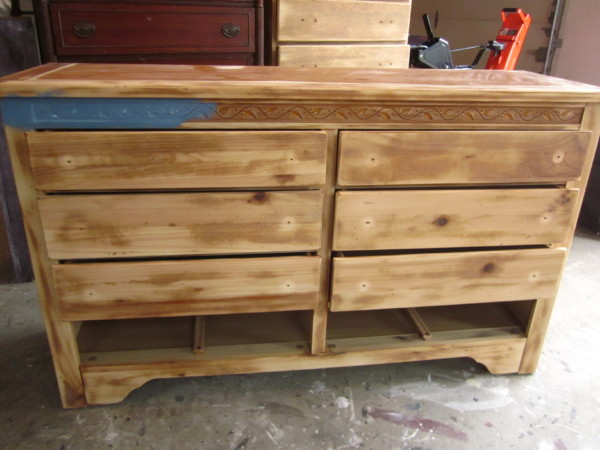

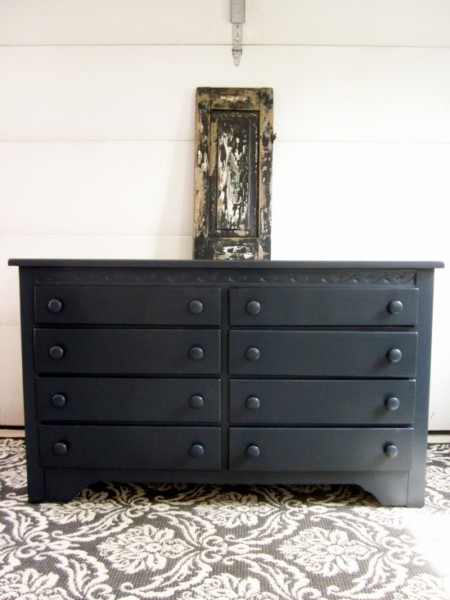

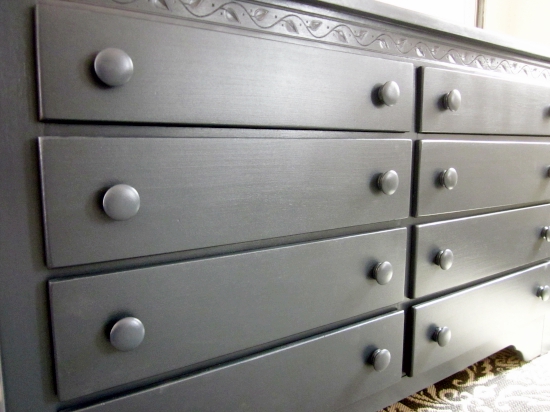
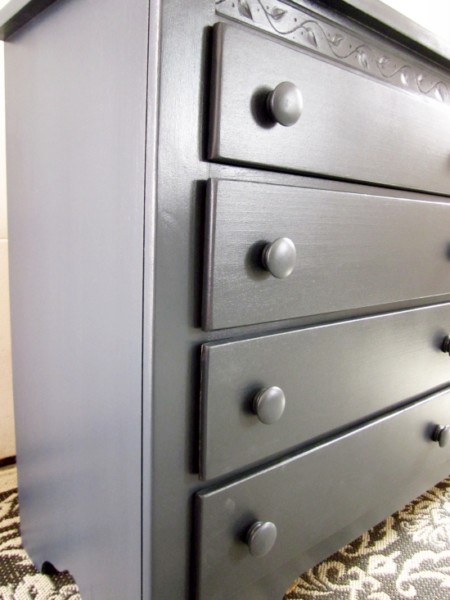



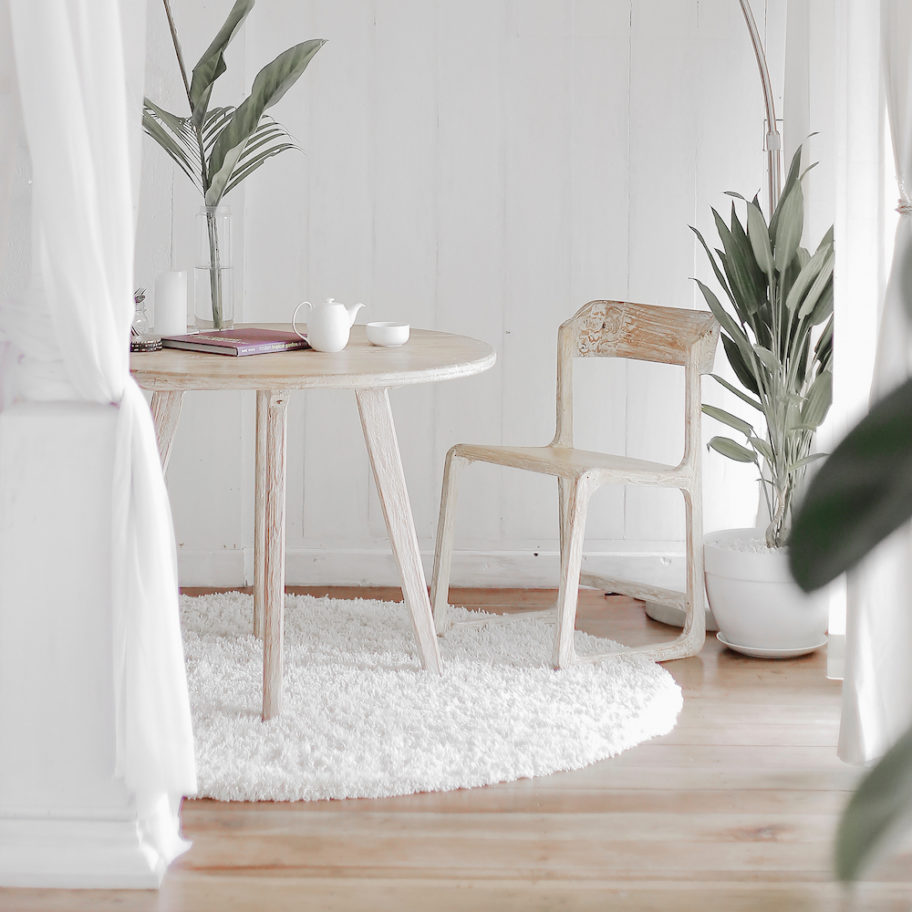

Beautiful color choice Vicki, you’ve turned a boring pine dresser into a lovely statement piece and it’s great to know that DTM Acrylic Enamel can be used on wood, thanks for grilling the rep about that 😉
Thanks Michelle! And I loved your post this week about making a slate serving board ( https://acraftymix.com/blog/2017/05/01/slate-serving-board/ ). Love slate but have never tried cutting it into a shape like that! Very cool!